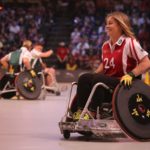Injuries are a consistent part of your life especially when you are an athlete seeing that you will be consistently performing high and low-intensity exercises. It happens to the best of us and there are numerous factors that might enable you to get an injury may it be contact or overuse.
Moving towards contact injuries first these are rather painful because they may happen due to the occurrence of contacts in sports like soccer, basketball, or baseball. These accidents might force swelling, pain, discomfort that will prevent you from being at full fitness.
The worst type of contact injuries is dislocations and fractures where in many cases, rest for months might be recommended along with surgery as well. The other type of injury that one usually encounters is a muscle injury or a muscle tear. The pain might cater to the severity of the injury as there are usually 3 grades.
In a 1st grade injury, you can expect to return back to normal within days and weeks however in a 2nd and 3rd-grade injury you will have to work on your recovery and some cases might require surgery. Muscle injuries would occur due to poor handling of your body such as not training enough, insufficient diet, pushing through your limits to the point where your body cracks and so much more. In this piece, we will explain how you can and should proceed with an injury.
Following the P.R.I.C.E Protocol:
Perhaps the most appropriate and somewhat mandatory procedure of handling an injury and making sure that you return back as quickly as possible is to follow the P.R.I.C.E protocol. Going into detail the first principle of the price protocol is to protect. This timeline is extremely important because you want to prevent any damage to your injuries area and start the healing process as soon as possible.
To enable that, protection is absolutely necessary. You can use support such as a sling, splint, or brace. In muscle injuries, a compression sleeve is recommended. After protection, the second step to follow is to Rest as the R in price. Resting is very crucial seeing that it is pretty much more than 70% of the process.

Icing can do wonders from relieving pain to speeding up your muscle recovery process. Use a plastic bag or a shopper and use crushed ice after which you will apply it to the injured area. The icing will decrease circulation to the area as well as compress the blood vessels that carry harmful elements to the injured area. Apply Ice daily for at least 15 minutes until the compression stage. In the compression stage, we use to support or mechanical aid to help us reduce the pain over time and heal the injured area by reducing the swelling in particular.
The final step in the P.R.I.C.E protocol is the elevation where the idea is that you have to keep your injury area above the level of your heart whenever you can. The elevation is perhaps awkward and hard to consistently keep in motion but it has proven to help in reducing swelling as well as increase the movements of fluids and your blood. The P.R.I.C.E protocol, if followed correctly would then sanction you to proceed towards step 2 which is Recovery.
Starting up with recovery:
Once you have carried out the standard procedures of resting the muscle and reducing the overall swelling around the area, you can then start with recovery. Recovery is the most important stage seeing that you cannot return back to full fitness if your injured area is not fully recovered.
Depending on the severity of your injury, you might have to work hard. Either way, remember to stay patient because it is not easy and might frustrate you at times especially if you have contracted a grade 2 or 3 muscle injury. When starting with recovery your first aim is to reestablish your range of motion and you can do that through several different exercises that able you to move your injured area in different angles and positions.
Make sure to go slow at the start and increase the intensity with time. Resistant bands are extremely effective as they will commit resistance to your injured area and force you to apply some strength whilst moving which helps in a range of motion. The second stage can be considered as strengthening your injured area.

A greater degree of work in the gym might be required with muscle injuries. One thing you have to make sure of is that you do not re-injure yourself which is very common when working on recovery. This is easy it is very important to take it easy and increase intensity along with time rather than rushing it all in at once.
Returning back to activity:
Once you feel that you have recovered completely, you can now return back to activity but with precaution. First and foremost for contact injuries, you need to first see a sports chiropractor as they will provide you the green light for you to start again. Start with light exercise on the training ground first seeing that you want to adjust yourself to the same environment again. After feeling comfortable in training you can now finally proceed to proper exercise but go light on yourself in the first few days. For example, if you are cycling, do not go all out and cycle for hours but take it slow as you build fitness. If you follow these steps then all shall be good and you will most likely return back to enjoying the sport you love!
Want to unlock greater wellness?
Listen to our friends over at Wellness Force Podcast to unlock your genetic potential with Dr. Ben Lynch:








 10 Tips to Sleep Smarter & Better
10 Tips to Sleep Smarter & Better